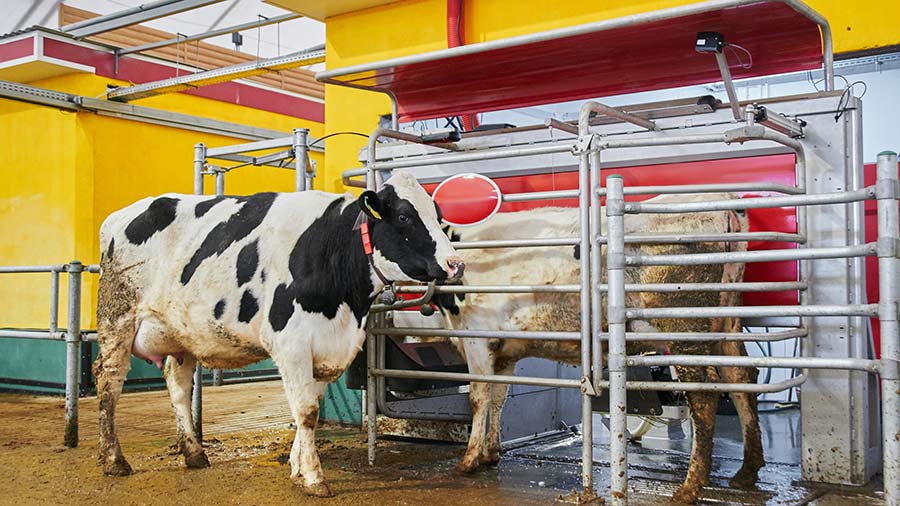Limiting concentrates fed in milking robot improves efficiency
 © amixstudio/Adobe Stock
© amixstudio/Adobe Stock Providing more feed outside of the milking robot reduced the amount of uneaten concentrates, which would benefit farm efficiency, according to a study involving 48 housed cows at the Agri-Food and Biosciences Institute (AFBI) Hillsborough.
Allowing cows within automatic milking systems to access concentrate in locations other than the milking robot has no adverse effects on robot visits, yields or lying time.
Researchers concluded that farmers should ensure cows are not overallocated concentrate feed within the milking robot.
See also: How Staffordshire dairy gets high robot visits with low cake costs
Milking frequency, milking time and eating speed all affect the amount of cake a cow is able to eat while being milked. Some cows simply do not having enough time in the robot to eat enough concentrate.
In Northern Ireland, out-of-parlour feeders have been suggested to top up additional concentrate for automatic milking systems.
But as feeding in the robot is the motivator for cows to get milked, scientists wanted to determine whether they would affect robot-visit frequency and, therefore, milk yield.
The trial cows had free access to one robot and two out-of-parlour feeders. A partial mixed ration (PMR) of 80% dry matter grass silage and 20% wholecrop plus 2kg concentrate blend was fed daily per cow.
Cows were allocated one of two treatments:
- “Robot high” cows received 80% of their additional concentrate ration in the milking robot and 20% through out-of-parlour feeders
- “Robot low” cows received 20% of their additional concentrate in the milking robot and 80% through out-of-parlour feeders.
Additional concentrates were on a feed-to-yield basis, but at least 1kg/day was always offered through the milking robot feeding station.
The study explored the effects of concentrate allocation on visits to the milking robot and the out-of-parlour feeders, concentrate and PMR intake, milk yield and lying time.
Cows with a higher allocation within the out-of-parlour feeders visited these more often, meaning that cows can adjust their visits as needed to reach their energy requirements.
The study confirmed that consumption of very high levels of concentrate within the milking robot is limited by the time available during milking.
This study was funded by the Department of Agriculture, Environment and Rural Affairs, DoE and AgriSearch
